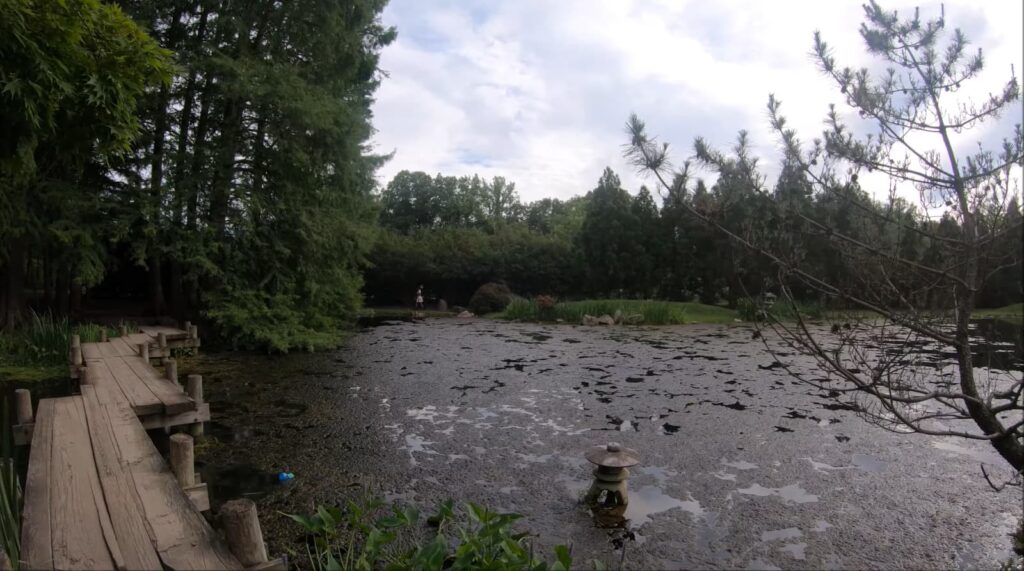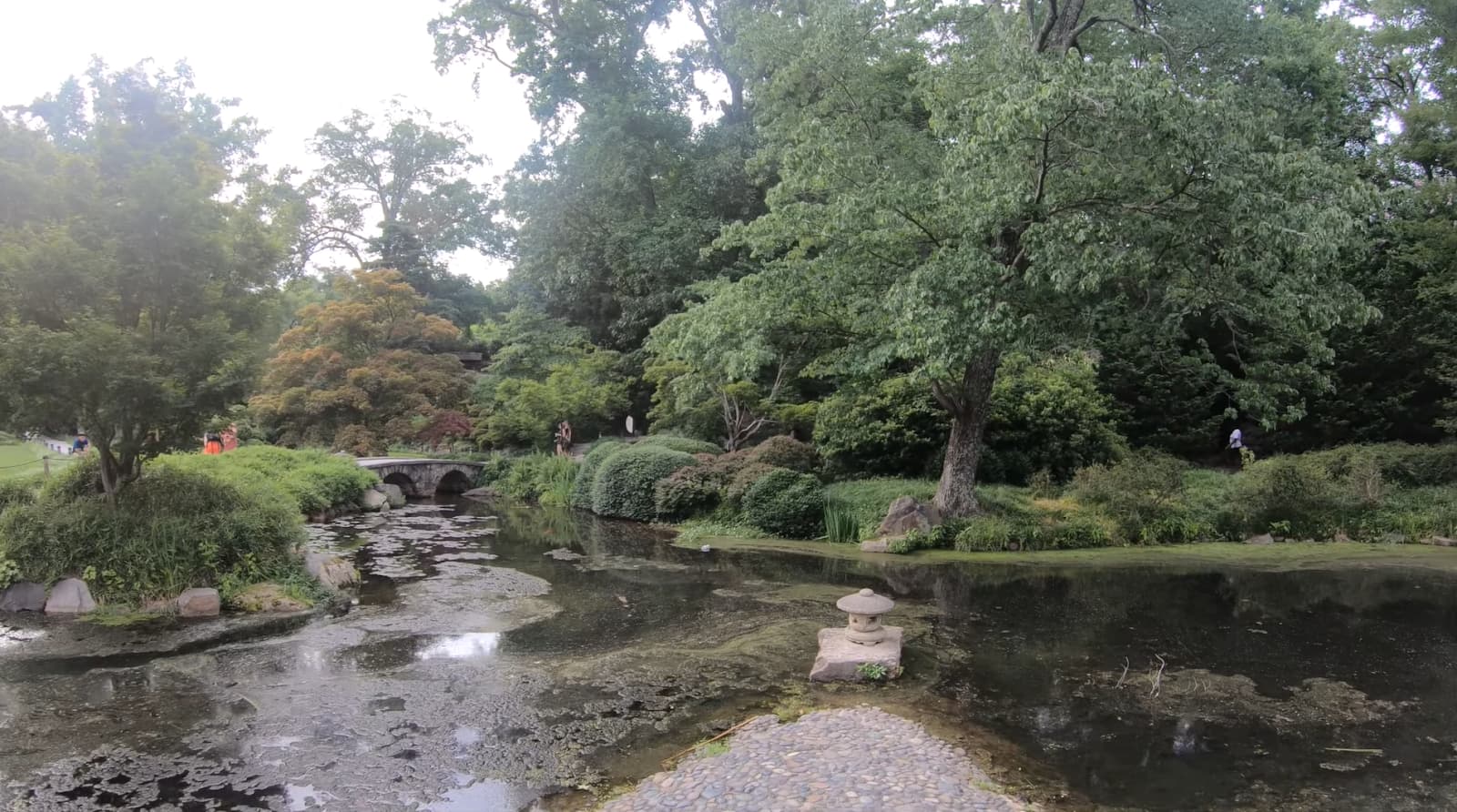Nestled in the heart of Maymont Park lies a hidden gem that embodies tranquility and natural beauty: the Japanese Garden Falls. This picturesque spot is a favorite among visitors seeking a peaceful retreat in the midst of the bustling city. As we enjoy the tranquility of Japanese Garden Falls at Maymont Park, let’s also explore a nearby city in Richmond, Virginia.
The Enchanting Italian Garden of Maimont
Delving into the Italian Garden at Maimont, one is transported away from the notion of it being a communal area. This resplendent garden boasts meticulously crafted stonework, an array of sculptures, elegant pergolas, enchanting fountains, and a kaleidoscope of stunning flora comprising flowers, shrubs, and trees. Its Victorian essence aligns more with an exclusive estate than a public space. Maimont, throughout its distinct history, has served dual roles – a private domain and a public haven, courtesy of the benevolent estate owners. Discover more in a video celebrating the Italian Garden’s centenary.
- The genesis of Maimont Gardens traces back to Major and Mrs. James H. Dooley, who commissioned its creation in the early 20th century;
- The expansive lawns encircling their mansion and other structures on the estate were crafted in the English pastoral tradition;
- However, juxtaposing this natural, pastoral landscape was the structured elegance of an Italian garden.
The Italian Garden, envisioned by Noland and Baskerville of Richmond, drew inspiration from the classical style of 15th and 16th-century Italy. Key elements like the Cascade and Fountain Court, situated above the garden’s eastern entrance, seem influenced by features at Villa Torlonia near Rome. Completed in 1910, the Italian Garden’s superb stonework, fashioned from Petersburg granite, stands unrivaled in any other public garden.
Maymont Garden merges quintessential Italian style features: ornate fountains, symmetrically arranged flowerbeds, sculptures, and the interplay of light and shadow under the extensive pergola along the garden’s northern boundary. Reflecting classical ideals, the garden was tiered and positioned on the southern hillside, overlooking a reservoir. In 1910, the garden offered a broad vista of the James River.
The main entrance to the Italian Garden lies at its western end, facing Maymont Mansion. A stone arch with the Latin phrase “Via Florum” (path of flowers) signifies the transition from the casual park zone to the Italian Garden’s secluded splendor. The Via Florum, rejuvenated in 2003 with the Harrison Family Foundation’s generous support, gracefully connects the Maymont Mansion to the Italian Garden.
Visitors are greeted by a pergola upon entering the garden, featuring parallel columns of rusticated granite upholding a latticed roof. Historical photos reveal climbing roses once adorned this pergola. Notably, at the pergola’s eastern end, stands a dome where even faint sounds create an intriguing echo. The Italian Garden Pergola is a sought-after locale for outdoor weddings in the warmer months.
The Italian Garden at Maymont is marked by its distinct geometric-patterned beds or parterres, a hallmark of Italian garden style. Historically, Italian gardens were characterized by a limited use of flowers, favoring evergreens, often shaped into elegant topiaries. Yet, the molded beds at Maymont’s main level showcase a Victorian inclination towards floral abundance, a trend that continues to be popular today.
From the main level, visitors can observe three other tiers of the garden: the Secret Garden, the Promenade, and the Cascade. In the era of the Italian Renaissance, a secret garden was typically a small, enclosed area designed for ladies to engage in conversation and needlework in privacy.
To the east, a carefully planned view unfolds from the garden, centering on a classic gazebo imported from Italy, a defining feature of Dooley’s vision. This gazebo becomes particularly enchanting in late spring when it is encircled by the full bloom of peonies.
In 1997, Maymont initiated efforts to reintegrate the Italian garden into the broader landscape, in line with its original design ethos. Historical photos confirmed that the views from the Italian Garden were integral to its design. To revive these vistas, the Maymont Horticulture Committee decided to remove certain plantings, like the ‘Hicksii’ yew and shrubs along the garden’s eastern boundary, which were added in the 1950s and 60s. These were replaced with roses, reminiscent of Mrs. Dooley’s preferences. Yews were repositioned to the eastern part of the garden, complemented by pots of pruned evergreens along the perimeter. These changes have enhanced the garden’s spacious feel, its visual alignment with the Italian marble gazebo and waterfall, and its overall integration with the surrounding landscape.
The Dooleys, who spent their summers at their Blue Ridge Mountains estate in Suwannanoa, designed Maymont’s gardens to predominantly feature spring flowers. However, since Maymont now welcomes visitors throughout the year, its garden beds are cultivated with a variety of shrubs and flowers that ensure a continuous display from spring to fall.
When exploring Maymont’s Italian Garden, visitors should immerse themselves in its geometric layout, multi-tiered design, historic vistas, vibrant color combinations, and its harmonious relationship with the surrounding landscape.
Maymont’s Tranquil Japanese Garden

Maymont’s serene Japanese Garden, the East Coast’s oldest public Japanese Garden, offers a stark contrast to the meticulously organized Italian Garden. Entering the Japanese Garden, with its unique gates, is akin to stepping into a different world. The garden exudes a sense of calm, with its cool, shaded areas fostering a tranquil intimacy. In this space, where sounds are softened, even children tend to become more contemplative and observant. While not a spiritual garden per se, it unmistakably encourages reflection. Discover more in a special video commemorating the garden’s centennial.
- This garden at Maymont is a harmonious fusion of various Japanese garden styles, encompassing two distinct design eras;
- In 1911, the Dooleys acquired a piece of the Kanawha Canal adjacent to Maymont and engaged Muto, a renowned Japanese garden master, to create their garden;
- Muto had previously crafted gardens for numerous estates across the East Coast.
Originating in China, landscaped gardens were introduced to Japan around the 7th century by Korean gardeners. The Japanese then tailored these Chinese and Korean influences to their own aesthetic needs.
The initial Japanese Garden at Maymont was relatively modest. Several elements from this early garden remain, such as the stonework at the waterfall’s base, select trees, and the meandering stream leading to the large pond. Regrettably, following Mrs. Dooley’s passing, the garden gradually lost its original intricacy and allure.
A significant restoration in 1978 by Earth Design, Inc. reinvigorated the garden. The recreated style, known as a “stroll garden,” is crafted to present evolving natural vistas to visitors. This renovation integrated aspects from classic gardens in Kyoto, Tokyo, and Nara.
The rejuvenated Maymont Japanese Garden now features meticulously groomed trees and shrubs, sculpted sand pools, stone formations, and varied water features, all designed to evoke an ancient, naturally evolved landscape. Key design elements include stone lanterns, winding paths, and bridges.
The garden’s palette emphasizes greens, browns, and grays to mirror the rugged beauty of nature. Flowers, while used sparingly, add to its charm. Water irises bloom along the water’s edge in spring, and cherry blossoms signal the passage of seasons.
Recent enhancements include the north entrance gate, a traditional archway; strategically placed plantings near the pond; two new lanterns; and a fresh pathway along the pond. These improvements, supported by Ikebana of Richmond, federal grants, and the William B. Thalhimer and Family Foundation, have further enriched the garden.
Visitors to Maymont’s Japanese Garden are encouraged to appreciate its subtle beauty, observe its restrained floral elements, discern various textures, and take in the myriad hues of green, brown, and gray. It offers a chance to contrast the Eastern ethos of the Japanese Garden with the Western design principles of the Italian Garden.
Maymont’s Arboretum: A Century-Old Haven of Global Flora
- Nestled within its sprawling 100-acre landscape, Maymont hosts an extraordinary arboretum, home to thousands of trees and shrubs;
- This collection is not only a showcase of Virginia’s native species, celebrated for their majestic size and beauty, but also a diverse array of over 200 exotic species;
- These were introduced by the Dooleys in the early 20th century, marking the start of an ambitious and extensive planting endeavor.
The Dooleys, seasoned world travelers with a penchant for exploring internationally renowned gardens, were likely inspired by their journeys to cultivate such a varied tree collection at Maymont. Their eclectic mix of exotic and native species reflects a profound appreciation for both aesthetic and scientific values, indicating a purpose beyond mere landscaping. This is evident in the strategic placement and nurturing of numerous national and state champion trees, including the exotic False Larch from Japan and the Persian Ironwood.
Recognized in 1986 as one of the nation’s significant arboretums, Maymont’s tree collection has garnered attention from tree connoisseurs worldwide. Gordon Tarbox, Jr., of Brookgreen Gardens, in a 1982 survey, praised the collection as a marvel that could not be replicated even in a century. Today, this arboretum continues to impress, housing several champion trees like the Blue Atlas Cedar, Cryptomeria, Darlington Oak, European Vineleaf Linden, and the Persian Ironwood, each a testament to the Dooleys’ visionary horticultural legacy.

Maymont’s arboretum stands as a living museum, where each tree and shrub narrates a story of global botanical exploration and preservation. It serves as a bridge between past landscaping artistry and modern-day environmental stewardship, inviting visitors to wander through a world where nature’s diversity and beauty are celebrated in every leaf and branch.
A key advantage of the arboretum at Maymont is the thoughtful initial placement of each tree, allowing ample space for their growth and expansion. The estate is also renowned for its stunning, seemingly effortless natural vistas, which embody a key principle of landscape gardening — the creation of beauty that appears both unplanned and uncontrived. While today’s visitors might appreciate the more structured tree formations along Magnolia Drive or the carefully designed evergreen allée near the Gate House, it’s fascinating to consider that this area, acquired by the Dooleys in the late 1880s, was once just open farmland.
The transformation of this landscape owes much to the Dooleys, who were deeply involved in shaping every aspect of their estate. Henry E. Baskervill, the architect behind the Italian Garden and Fountain Court, as well as various outbuildings, likely played a significant role in guiding the overall landscape architecture.
Prominently, some of the most remarkable trees in the arboretum are found surrounding the Maymont Mansion, conveniently near the Historic Estate entrance.
The Maymont Foundation, tasked with safeguarding this invaluable arboreal heritage, is acutely aware of its obligation to future generations. With support from organizations like the Institute for Museum Services, America the Beautiful, and the Virginia Department of Forestry, along with community allies and individual benefactors, the Foundation is dedicated to maintaining the integrity and vitality of this original collection for posterity.
Conclusion
Maymont Park is a veritable living museum, brimming with history, art, horticulture, and natural beauty. Each garden—be it the grandeur of Italian, tranquility of Japanese, or biodiversity of the Arboretum—proffers a unique ambiance, taking visitors on a journey through time and cultures. The Maymont Mansion, standing tall in this scenic convergence, ties the knot between past and present. Whether you yearn for a serene retreat into nature, historical insights, or an educational exploration of varied landscapes and architectures, Maymont Park is undoubtedly a destination to cherish. Each visit here promises something new to marvel at, making it a truly timeless treasure of Richmond, Virginia.
